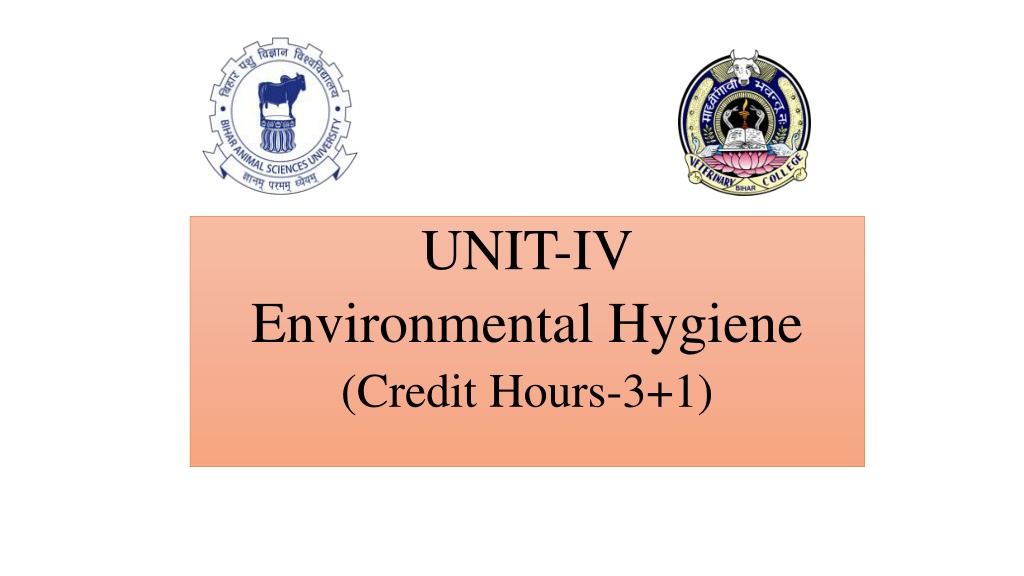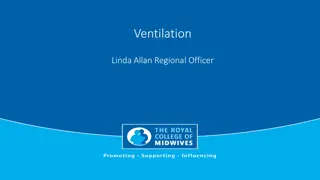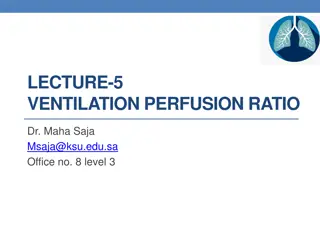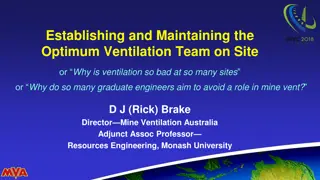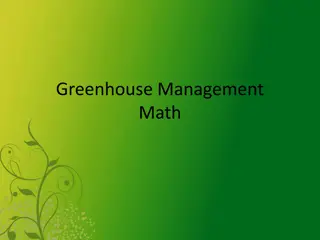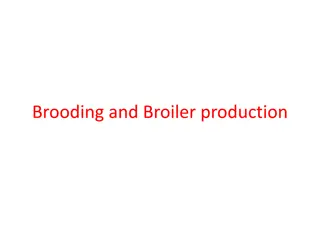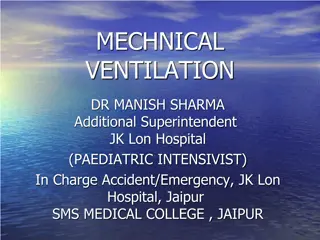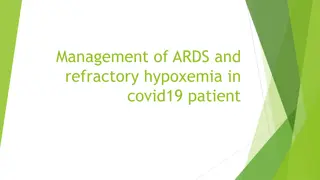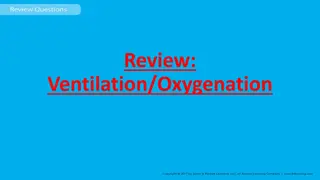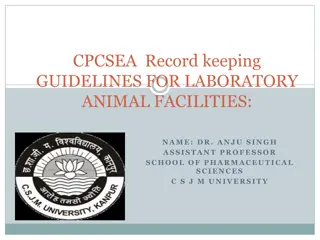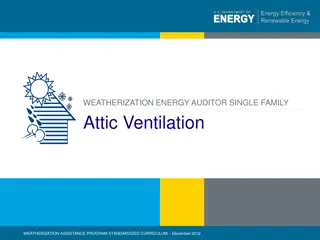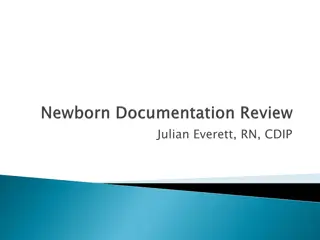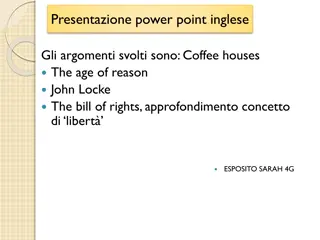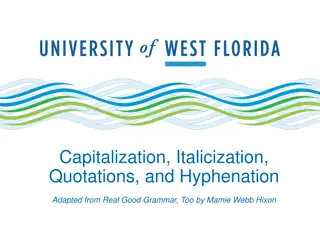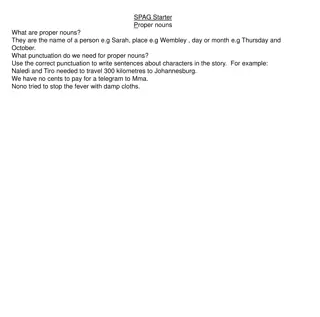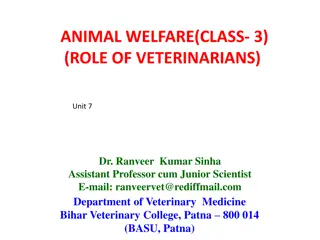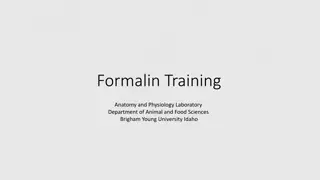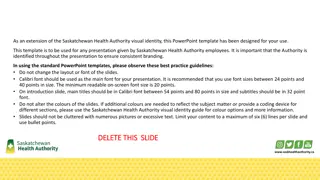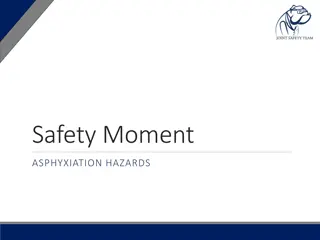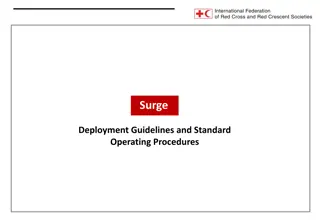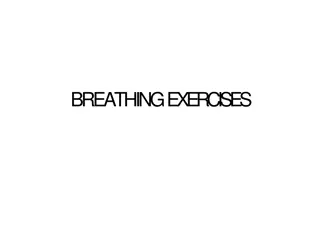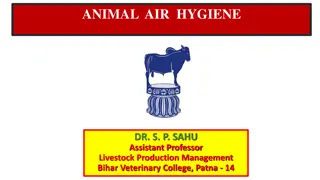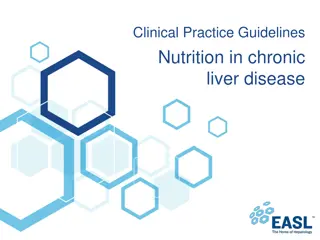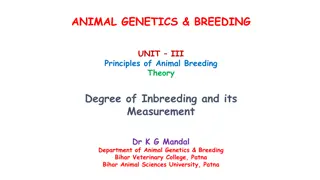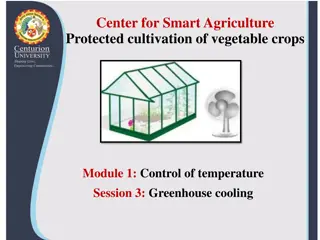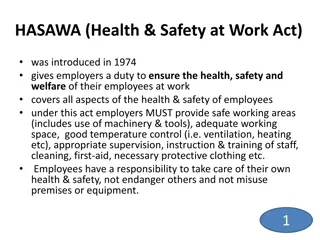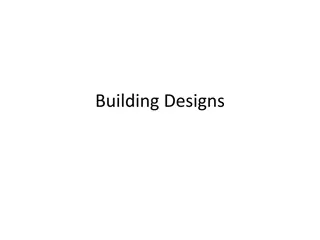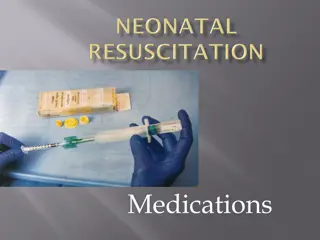Proper Ventilation for Animal Houses: Importance and Guidelines
Ventilation in animal houses is crucial for removing stale air and replacing it with fresh air to maintain optimal conditions for animals and their attendants. Improper ventilation can lead to various issues like high humidity, disease spread, and vulnerability to pathogens. This article discusses the necessity of ventilation, consequences of inadequate ventilation, and guidelines for ensuring suitable airflow in animal housing facilities.
Download Presentation

Please find below an Image/Link to download the presentation.
The content on the website is provided AS IS for your information and personal use only. It may not be sold, licensed, or shared on other websites without obtaining consent from the author. Download presentation by click this link. If you encounter any issues during the download, it is possible that the publisher has removed the file from their server.
E N D
Presentation Transcript
UNIT-IV Environmental Hygiene (Credit Hours-3+1)
Ventilation in animal houses
VENTILATION Ventilation in animal houses is required: Removing stale air & To replace it by fresh air Ventilation should be appropriate: Very little ventilation or too much of it is injurious to the health of animals & their attendants In improperly ventilated animal houses: The stagnant air becomes warmer & more humid Condensation of water on the surface Bedding & floors makes them wet Animals become uncomfortable Leads to concentration of animals at places (uneven distribution of animals) Accumulation of excreta & expired air in pockets
VENTILATION High humidity: Lead to concentration of dust, particulate matter, ammonia, other gases Pathogenic microorganisms carried by animal facilitating exacerbation of respiratory & enteric diseases, mastitis & other illnesses High humidity with low temperature (during the winter months): favourable for the spread of various infections Gases from slurry pits or channels beneath the animals also expose the animals to intoxication In over ventilated animal houses: Accompanying draughts: during the winter months & cold climate of the hills Wasting of much of the valuable heat: many deaths due to chilling & lowering of the animals resistance to pathogens Particularly so in case of new born & unprotected stock which becomes vulnerable to various diseases and deaths
VENTILATION Open ventilation of cattle yard Less problems & ample air flow promotes good growth of the coat Prevents accumulation of animal waste products in air Requirements for fattening piggery or brooder house for chicks are different While planning ventilation, main stress is given for avoiding draughts at ground level and open side of the yard to face towards the south The modern concept of ventilation aims The replacement of vitiated air by supplying fresh outdoor air Controlled in regards to its humidity, temperature & purity to provide a thermal environment that is comfortable & free from risk of infection
STANDARDS OF VENTILATION The standards of ventilation: based on the efficiency of ventilation in removing odour & obnoxious gases The gases generated: Carbon dioxide, Ammonia, Hydrogen sulphide, Methane, Carbon monoxide & Fumigation gases like formaldehyde, etc. The Threshold limit values (TLV) for animals are lower than that for man & deserve utmost attention
STANDARDS OF VENTILATION Three standards are considered for ventilation: Cubic space: The amount of carbon dioxide produced during respiration does not exceed more than 2 parts in 10,000 parts of air This would depend on the type, age, & number of livestock housed therein Air change: It is more important than cubic space requirement The cooling power of the air is to be maintained satisfactorily The number of air changes/hour: dividing the total hourly air supply to the house by the cubic capacity of the house Floor space: The floor space per animal is more important than the cubic space Heights in excess of 3 meters are ineffective from the point of view of ventilation as the products of respiration tend to accumulate at the lower levels
TYPES OF VENTILATION Types of ventilation: two Natural Mechanical Natural ventilation: Simplest system of ventilation Depends on three forces: Wind Diffusion Inequality of temperature
NATURAL VENTILATION Broadly three types of natural ventilation are in use: 1. A fixed open ridge with a protective cap: sufficient in climatic housing for cattle 2. A simple chimney type Satisfactory for a limited area of controlled outlet ventilation The throat can be controlled by a butter- fly value or hinged flap 1. Hopper- type windows Fitted with gussets to prevent direct draughts serving as principal inlets Small baffled openings left open during cold or windy weather
NATURAL VENTILATION Automatic control of natural ventilation: achieved by Regulating the open area with the help of automatic thermostatic means Linking the thermostat to a motor which progressively open or closes the ventilation flaps, inlets/outlets according to the temperature Breathing roof & upside down roof ventilation also provide good top ventilation Extraction of air form a limited number of ridge fans Entry of air through baffled inlets around the wall are the conventional methods for ventilating a livestock building
MECHANICAL VENTILATION Mechanical or artificial ventilation can be effected by four means: Exhaust ventilation: Air is extracted to the outside from the inside by an exhaust fan operated electrically Plenum ventilation: Fresh air is blown into the room by centrifugal fans so as to create a positive pressure & replace the vitiated air proportionate Balanced ventilation: This is a combination of exhaust & plenum system of ventilation Air conditioning: It is the simultaneous control of all factors affecting both physical & chemical conditions of atmosphere within a structure These factors affecting both physical & humidity, air movement, distribution, dust bacteria, odour & toxicgases Most of these affect the health & comfort of animals
MECHANICAL VENTILATION A number of alternatives are also being developed as per need 1. Cross & end to end ventilation: Animal house size: 12 m X 30 m By fixing a number of fans in one of the side walls (opposite to the side wall providing air entry) 2. Ventilation of wide span building (14-22 m) By diffusing the incoming air by means of a filterof glass- fibre or hessian Peg board/slotted hard-board as diffusing agents: prevent the clogging of the fine glass-fibre filters
